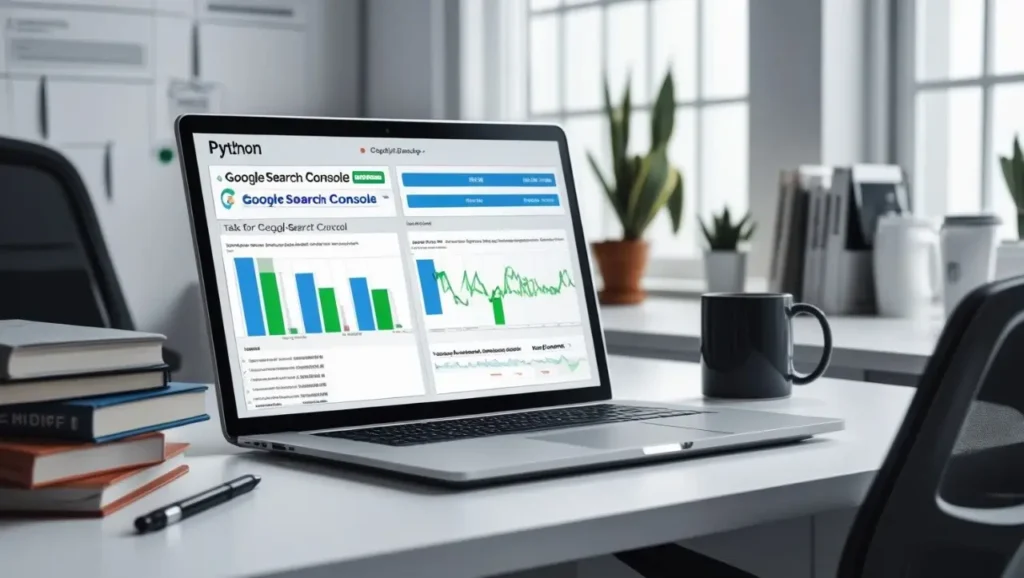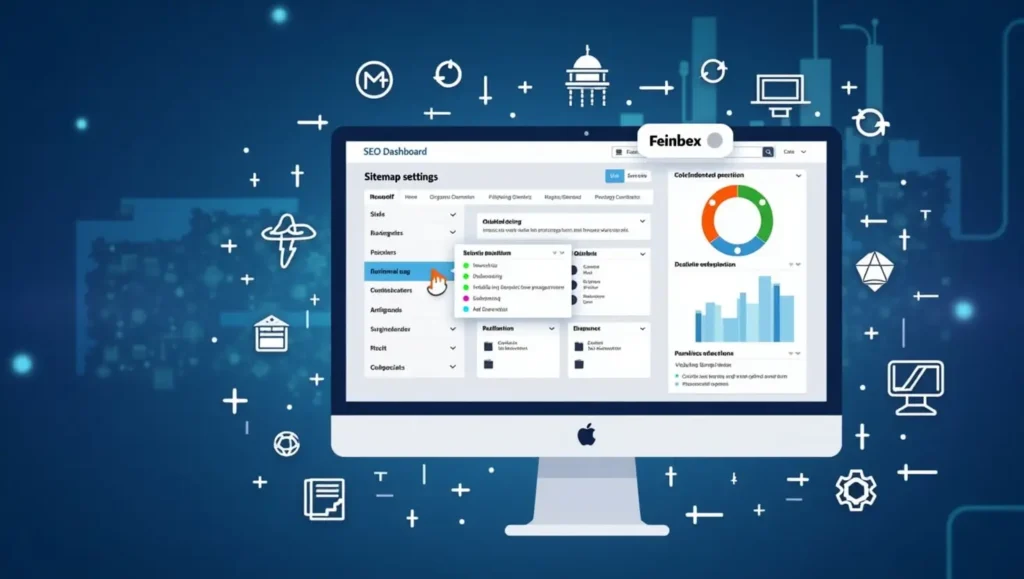Welcome to Fusicrest! We’re here to supercharge your SEO efforts with expert services and innovative strategies to help your website achieve top rankings and drive success.In the world of SEO, data is the foundation of every decision. Understanding how your website performs in search results and how users interact with it is crucial for optimizing your strategy. Google Search Console (GSC) and Google Analytics (GA) are two of the most powerful tools for gathering this data. However, manually extracting and analyzing this information can be time-consuming and prone to errors.
Enter Python—a versatile programming language that can automate data extraction, processing, and visualization from GSC and GA. By leveraging Python, you can streamline your workflow, uncover actionable insights, and make data-driven decisions faster.
This blog is part of our series on Technical SEO with Python, where we explore how Python can be used to solve complex SEO challenges. In this installment, we’ll dive into how Python can automate tasks related to Google Search Console and Google Analytics, providing actionable tips, real-life examples, and expert insights
Table of Contents
ToggleWhy Automate Google Search Console & Analytics with Python?
Google Search Console and Google Analytics are treasure troves of data, but manually navigating these platforms can be tedious. Here’s why Python is a game-changer for automating these tasks:
- Efficiency: Automate repetitive tasks like fetching reports, filtering data, and generating visualizations.
- Accuracy: Reduce human error by automating data extraction and processing.
- Customization: Create tailored reports that focus on the metrics that matter most to your business.
- Integration: Combine data from multiple sources (e.g., GSC, GA, and third-party tools) for a holistic view of your SEO performance.
By automating these tasks, you can focus on interpreting the data and implementing strategies to improve your website’s performance.
Getting Started with Google Search Console API
Google Search Console provides an API that allows you to programmatically access your search performance data. Python’s google-api-python-client library makes it easy to interact with this API.
Example: Fetching Search Analytics Data
Here’s how you can use Python to fetch keyword performance data from GSC:
python
Copy
from googleapiclient.discovery import build
from google.oauth2 import service_account
# Authenticate and create a service object
SCOPES = [‘https://www.googleapis.com/auth/webmasters.readonly’]
SERVICE_ACCOUNT_FILE = ‘path/to/your/credentials.json’
creds = service_account.Credentials.from_service_account_file(
SERVICE_ACCOUNT_FILE, scopes=SCOPES)
service = build(‘searchconsole’, ‘v1’, credentials=creds)
# Define the request body
request = {
‘startDate’: ‘2024-01-01’,
‘endDate’: ‘2024-02-01’,
‘dimensions’: [‘query’, ‘page’],
‘rowLimit’: 10
}
# Fetch the data
response = service.searchanalytics().query(siteUrl=’https://example.com’, body=request).execute()
rows = response.get(‘rows’, [])
# Print the results
for row in rows:
query = row[‘keys’][0]
page = row[‘keys’][1]
clicks = row[‘clicks’]
impressions = row[‘impressions’]
print(f”Query: {query}, Page: {page}, Clicks: {clicks}, Impressions: {impressions}”)
Key Benefit: Automates the process of fetching keyword and page performance data, enabling you to track rankings and identify optimization opportunities.
Automating Google Analytics Reporting
Google Analytics provides a wealth of data on user behavior, traffic sources, and conversions. Python’s google-analytics-data library allows you to programmatically access this data.
Example: Fetching Traffic Data
Here’s how you can use Python to fetch traffic data from GA:
python
Copy
from google.analytics.data_v1beta import BetaAnalyticsDataClient
from google.analytics.data_v1beta.types import DateRange, Dimension, Metric, RunReportRequest
# Initialize the client
client = BetaAnalyticsDataClient()
# Define the request
request = RunReportRequest(
property=’properties/123456789′, # Replace with your GA4 property ID
dimensions=[Dimension(name=’date’)],
metrics=[Metric(name=’sessions’)],
date_ranges=[DateRange(start_date=’2024-01-01′, end_date=’2024-02-01′)],
)
# Fetch the data
response = client.run_report(request)
# Print the results
for row in response.rows:
print(f”Date: {row.dimension_values[0].value}, Sessions: {row.metric_values[0].value}”)
Key Benefit: Automates the process of fetching traffic data, helping you monitor website performance and identify trends.
Combining GSC and GA Data for Deeper Insights
One of the most powerful applications of Python is combining data from multiple sources. For example, you can merge GSC keyword data with GA traffic data to understand how specific keywords drive user engagement.
Example: Merging GSC and GA Data
python
Copy
import pandas as pd
# Sample GSC data
gsc_data = {
‘Query’: [‘Python SEO’, ‘Technical SEO’, ‘Web scraping’],
‘Clicks’: [120, 80, 95],
‘Impressions’: [1500, 1200, 1000]
}
# Sample GA data
ga_data = {
‘Query’: [‘Python SEO’, ‘Technical SEO’, ‘Web scraping’],
‘Sessions’: [200, 150, 180],
‘Bounce Rate’: [40, 50, 45]
}
# Create DataFrames
gsc_df = pd.DataFrame(gsc_data)
ga_df = pd.DataFrame(ga_data)
# Merge the data
merged_df = pd.merge(gsc_df, ga_df, on=’Query’)
print(merged_df)
Key Benefit: Provides a holistic view of how keywords impact both search performance and user behavior.
Real-Life Applications of Python for GSC & GA Automation
Case Study: Automating Monthly SEO Reports
A digital marketing agency used Python to automate monthly SEO reports for their clients. By fetching data from GSC and GA, processing it with Pandas, and generating visualizations with Matplotlib, they reduced report generation time by 70%.
Expert Insight
According to Marie Haynes, a leading SEO consultant, “Automating data collection and analysis allows SEO professionals to focus on strategy and creativity. Tools like Python make it easier to uncover insights that drive real results.”
Best Practices for Automating GSC & GA with Python
- Start Small: Begin with simple tasks, such as fetching basic reports, before tackling more complex projects.
- Use Official APIs: Always use official APIs (e.g., GSC API, GA API) to ensure data accuracy and compliance.
- Secure Your Credentials: Store API credentials securely and avoid hardcoding them in your scripts.
- Visualize Data: Use libraries like Matplotlib and Seaborn to create visualizations that make insights easier to understand.
Conclusion
Python is a powerful tool for automating tasks related to Google Search Console and Google Analytics. By leveraging Python, you can streamline data extraction, processing, and visualization, enabling you to make data-driven decisions faster and more efficiently.
As part of our Technical SEO with Python series, this blog highlights the importance of automation in modern SEO workflows. Whether you’re a beginner or an experienced professional, Python can help you unlock the full potential of GSC and GA data.
Next Steps: Start experimenting with the examples provided in this blog. Identify repetitive tasks in your SEO workflow and explore how Python can automate them.



